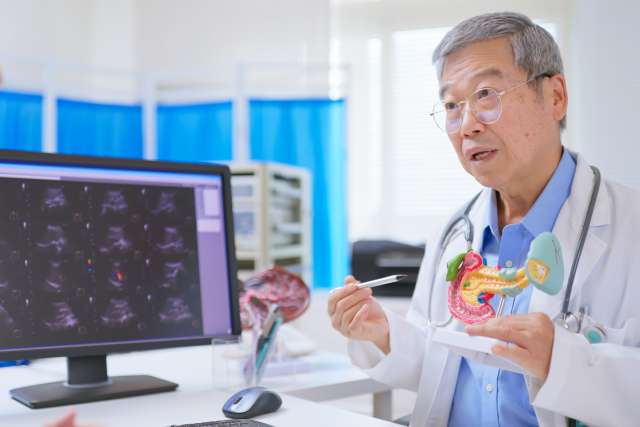Many genes that increase the risk of autism spectrum disorders have been identified, but their mechanisms remain largely unknown. Now a team of UCLA researchers has received a five-year grant of more than $5 million from the National Institutes of Health to support its work to identify those mechanisms.
Led by Dr. Daniel Geschwind at UCLA, researchers will work with counterparts at Stanford University to assess the specific impact of genetic mutations on alterations in molecular, cellular and neural circuitry. Geschwind is the Gordon and Virginia MacDonald Distinguished Chair in Human Genetics and a professor of neurology and psychiatry at the David Geffen School of Medicine at UCLA. The Stanford team received a grant of about $4 million over 5 years; it’s led by Sergiu Pasca, an assistant professor of psychiatry and behavioral sciences.
“Both institutions have learned so much in recent years about the myriad individual changes behind autism spectrum disorders, but we still don’t understand the impact of those changes or how they work together,” Geschwind said. “This grant will help us to collaboratively identify the missing pieces of the puzzle.”
The primary objective of the grant, which is funded through the National Institutes of Mental Health, is to encourage innovative “convergent neuroscience” approaches that help link various types of analyses. That is, researchers are encouraged to explain the specific impact of individual biological processes.
The researchers will use state-of-the-art modeling methods, including in vitro models of human brain development; induced pluripotent stem cells; and comparisons and analyses of physiology, genomics, physics and behavior.
The study of pluripotent stem cells has particular potential. As part of that work, researchers will develop and analyze novel human stem cell-based models that are differentiated from induced pluripotent stem cells and assembled into organized 3D brain cultures that resemble the human forebrain.
“Using this technology, we have now the ability to recapitulate in a dish aspects of human brain development that were previously inaccessible,” Pasca said. “More important, we can now leverage this tool to study the role of genes associated disease and illuminate the level of molecular convergence among various forms of autism.”‘
Overall, the research is intended to lead to a clearer understanding of the power and limitations of such modeling systems, while uncovering potential areas of convergence in different genetic forms of autism spectrum disorders. Ultimately, the project will take researchers everywhere closer to a full picture of this complex array of disorders.



